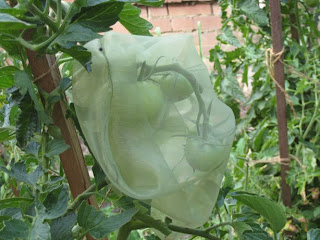We had some friends around for lunch yesterday, one of whom is a professional gardener. I'd been keen to show him our little garden for some time, but started feeling a bit nervous a few days ago. You see I cast a critical eye over the place and realised it was not looking its best. The fig tree is covered in scale and has some nasty outbreaks of furry caterpillars, the kale has become the cradle of a new aphid civilisation and even my prized tomatoes were looking a bit brown and sad in places. So after talking vegie growing with him whenever we'd met, I was a little uncomfortable at the thought of showing him around a distinctly unimpressive looking garden.
I forgot: he is a professional gardener. He's seen it all before and was quick to dismiss my ego-destroying disasters as being just what happens in a humid summer when you grow temperate-climate vegetables. The weather lately has also been particularly well suited to helping all our pesty little friends with their breeding and eating.
Our conversation served to remind me that growing things is always a bit hit and miss. Farmers with generations of growing experience still experience crop failures so why would it be any different for a home gardener? In my case half of the fun is trying new things, and with failures hopefully comes knowledge gained. And anyway, the kale can still be used (after some scrubbing) and the fig tree still has figs on it, (at least until the bats notice them)... So while it would be grand to have a picture-perfect weedless, pestless, embarrassing-dead-thing-free garden, that's just not going to happen. Our front yard farm is on display to the world (or at least to the street) as an honest example of home vegie growing. And while I do have a few plans to neaten things up a bit, all of our successes, failures and ill-conceived experiments will remain visible for all to see, at least until they harvested... or the bats get them... or the aphids...










